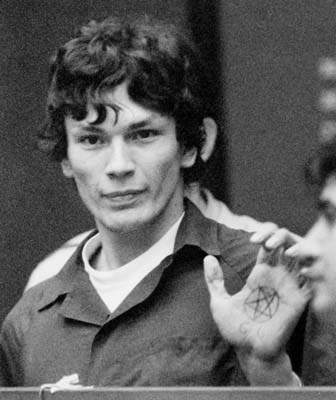
Maybe it’s the sun, but California is a magnet for serial killers. The Zodiac Killer, The Hillside Strangler, The Manson Family; all called the Golden State home.
But non were as chilling as The Night Stalker.
The Night Stalker is one of the most terrifying serial killers in American history. Typically, psychopathic killers follow a pattern that can make them relatively predictable.
But Richard Ramirez, who would become dubbed the Night Stalker in the press, was a tornado of random violence. Murders, assaults, rapes, kidnappings—he terrorized the West Coast in 1984 and 1985, and was ultimately convicted of 13 counts of murder, 5 counts of attempted murder, 11 counts of sexual assault, and 14 counts of burglary, although those are probably only a fraction of his actual crimes.
His rampage became known around the world but, the new Netflix series Night Stalker: The Hunt for a Serial Killer re-frames the Ramirez story through the prism of those who chased and ran from him. And while Stalker can feel a bit like a Lifetime TV movie, it aptly documents a crime spree that would not only freeze the state; it transfixed a nation.
Stalker starts with a montage that sets the tone for Los Angeles in the 1980s, painting it as one of the most vibrant communities in the world, but possessing a criminal underbelly that emerged after dark.
The star of the docu=series is Detective Gil Carrillo, who was an inexperienced kid cop when he led the investigation into the Night Stalker crimes with legendary detective Frank Salerno, who broke the Hillside Strangler case and is an eloquent interview here. Their recollections of tips, leads and almost-hads give the film its police-procedural edge.
Too bad director Tiller Russell didn’t use their narrative to lead into an examination of the killer himself. Ramirez, who granted a handful of prison interview before his death from cancer in 2013, is given little attention in the film — just the final chapter in a four-piece series. It’s not enough, and the film would have been better served if Ramirez, a professed Satanist and fan of AC/DC, had been the center of at least the last two chapter.
It doesn’t completely derail Stalker, which has some binge-worthy moments, including the cliffhanger end of every episode.
Perhaps, though, this is the fitting film for the Ramirez case, which ended in a death sentence that was never carried out.
The movie feels similar: A relief that it wasn’t worse, but a shame it didn’t go farther.
